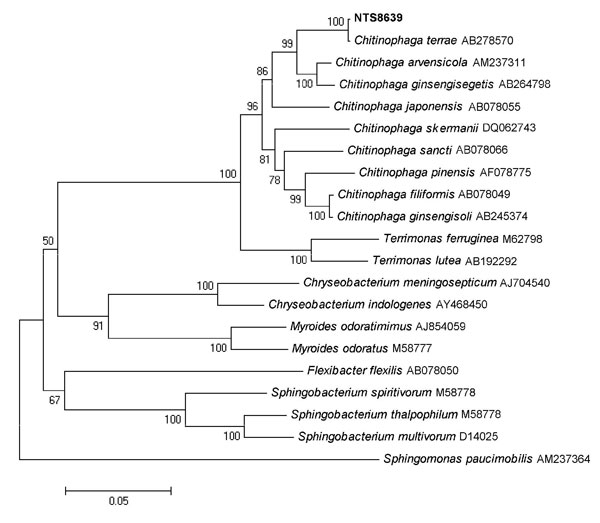Volume 15, Number 7—July 2009
Letter
Chitinophaga terrae Bacteremia in Human
Figure

Figure. Neighbor-joining (NJ) tree showing the phylogenetic placement of strain NTS8639 (in boldface) among members of the Chitinophaga terrae species. Twenty-one 16S rRNA gene sequences selected from the GenBank database were aligned with that of strain NTS8639 by using MEGA4 (www.megasoftware.net). Accession numbers are indicated after the species name. The evolutionary history was inferred using the NJ method. The figure shows the optimal tree; the sum of the branch lengths = 1.12829943. The percentage of replicate trees in which the associated taxa clustered together in the bootstrap test (1,000 replicates) are shown next to the branches. The tree is drawn to scale, with branch lengths in the same units as those of the evolutionary distances used to infer the phylogenetic tree. The evolutionary distances were computed using the Kimura 2–parameter method and are in the units of the number of base substitutions per site. The final dataset contains 1,304 positions. Phylogenetic analyses were conducted in MEGA4. NJ and parsimony trees were globally congruent with the distance tree and confirmed the placement of the strain NTS8639 in the C. terrae species. Scale bar indicates substitutions per nucleotide position.